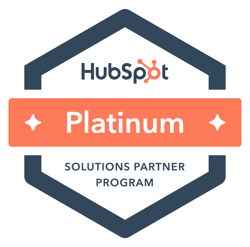
You might be a bona fide B2B email strategy guru, but do you know what it takes to tweak those strategies to make them suitable for event marketing? Find out...
It's a given that B2B marketers love email. Like really, really love email. But when they start using it for events, they often suck at it. Even if they're actually pretty good at it day to day. That's because they don't understand how to do email for events, which is a pretty different thing from a standard B2B email strategy. Here we'll explain what you need to change and why...
Step 1: Change the message
Sounds obvious right? But you don't just need to stop talking about your product in your email, conversely you actually need to stop talking about your event. Not entirely, but actually successful event emails only talk about the event about 20% of the time.
- Talk about recipient priorities: People don't care about your event. They don't care about your brand. They care about the things at work that are causing them pain. They care about the opportunities they spot that could make them look amazing to their boss. These are the things you need to talk about in your emails.
- Talk about content: Everyone loves a freebie. And of that free thing happens to be high value content that taps into one of the opportunities or pain points we just talked about, bingo, happy recipient. Your job with the email is to gently let them know that they can keep that warm fuzzy glow going by signing up for more of the same at your event.
- Talk about take aways: Related to the first point, you need to stay focused on the solutions and value your event provides for the attendee. What will they come away with? New ideas? Alternative approaches to a challenge? And get specific, put numbers against these things so they know the event content is really there.
For more help, check out subject line tips and our steps to crafting the perfect event email.
Step 2: Change the timings
If the average B2B sales cycle is a marathon, an event is a sprint. Even if you've given yourself the optimal lead time, an event comes up fast and there's no letting it slip into next week which you can with a sale. This means your email strategy has to move that much faster, but faster doesn't necessarily mean cramming the same number of steps in (think long powerful strides like Usain Bolt!)
- Cadence: No one wants to hear about the same event twice in a week. It's overkill. But similarly if you wait a full month between emails, people are unlikely to recall the first one. Every 1-2 weeks is about right.
- Send day/time: You may have identified your sweet spot for send time as part of your B2B email strategy but this may well change for events. You'll need to test to see what works best for your industry and event type.
- Total number of emails per event: We reckon 5-6 is the maximum any one contact should receive. After all, how many times would you invite your friend to your party?
Step 3: Change the audience
Your internal email list is a precious thing. As a B2B email strategy expert, you're probably all over segmentation and lead profiling. So there's no need to explain the hows and whys. But have you thought about how your segmentation might have to change for an event?
- Geography: Real world event response rates are seriously affected by proximity of the prospect to the event. Sounds obvious but a lot of B2B marketers don't factor this in when creating event invitations.
- Attendee type: This is another split that doesn't feature in your traditional B2B email strategy. You'll have very different things to say to guests, partners and sponsors, and speakers.
- Lead score: Finally, you'll want to look at where the potential invitee is in your funnel because this will guide whether you invite them or not. Events are usually a mid-funnel type activity, a nice next step for people who've engaged with your online content but not got as far as having a proposal on their desk.
We hope you've enjoyed the post and can see what a different animal an events email is compared with your standard B2B communication. For more of the same check out how you can leverage your existing B2B audience for an event or download our free guide:







Do you have any comments?